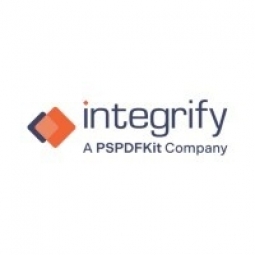Technology Category
- Automation & Control - Human Machine Interface (HMI)
- Sensors - GPS
Applicable Industries
- Cement
- Equipment & Machinery
Applicable Functions
- Human Resources
- Product Research & Development
Use Cases
- Inventory Management
- Time Sensitive Networking
Services
- System Integration
- Training
About The Customer
GlaxoSmithKline (GSK) is a leading research-based pharmaceutical company headquartered in the U.K. with operations based in the United States. The company was formed in 2000 through a merger between Glaxo Wellcome and SmithKline Beecham, two organizations with histories reaching back to the early 1800s. GSK holds an estimated seven percent of the world’s pharmaceutical market and has more than 100,000 employees worldwide. Of these, more than 40,000 are in sales and marketing, making it the largest sales force in the industry. Around 35,000 employees work at 82 manufacturing sites in 37 countries. Every hour, GSK spends more than $560,000 on researching new medicines.
The Challenge
GlaxoSmithKline (GSK), a leading research-based pharmaceutical company, faced a significant challenge in managing its IT request processing methods. With a workforce of over 100,000 employees worldwide, the company's IT departments had developed their own methods and interfaces for processing users’ requests for IT equipment and services. This resulted in a lack of standardization, redundancy of some processes, and confusion among users about where to go for service and how to make their requests. GSK needed a solution that could be implemented across all IT departments worldwide, providing a single, user-friendly interface. The company also aimed to reduce costs incurred by individual IT groups who were financing the development of their request processes through the use of outside consultants. The solution needed to work across a multinational company with numerous business units and legacy systems, and build on existing systems without having to start from scratch.
The Solution
GSK chose to expand and enhance its existing Integrify solution to address this challenge. Integrify, a flexible business process management tool, allowed GSK to build on its existing systems rather than start over with something entirely new. It connected with the GSK directory, enabling many fields in the online request forms to be pre-populated, saving end users time and effort during the request process. Integrify also provided form creation, routing definition, and tracking tools to those responsible for processing requests, minimizing data entry and simplifying requests for approval and fulfillment. The solution eliminated problems typically related to labor-intensive processes such as manual paper handling and email requests, and reduced costs per transaction by 60 to 90 percent as opposed to paper-based processes. GSK now uses Integrify to handle more than 600 different types of requests, processing almost 16,000 requests each month.
Operational Impact
Quantitative Benefit

Case Study missing?
Start adding your own!
Register with your work email and create a new case study profile for your business.
Related Case Studies.

Case Study
Smart Water Filtration Systems
Before working with Ayla Networks, Ozner was already using cloud connectivity to identify and solve water-filtration system malfunctions as well as to monitor filter cartridges for replacements.But, in June 2015, Ozner executives talked with Ayla about how the company might further improve its water systems with IoT technology. They liked what they heard from Ayla, but the executives needed to be sure that Ayla’s Agile IoT Platform provided the security and reliability Ozner required.

Case Study
IoT enabled Fleet Management with MindSphere
In view of growing competition, Gämmerler had a strong need to remain competitive via process optimization, reliability and gentle handling of printed products, even at highest press speeds. In addition, a digitalization initiative also included developing a key differentiation via data-driven services offers.

Case Study
Predictive Maintenance for Industrial Chillers
For global leaders in the industrial chiller manufacturing, reliability of the entire production process is of the utmost importance. Chillers are refrigeration systems that produce ice water to provide cooling for a process or industrial application. One of those leaders sought a way to respond to asset performance issues, even before they occur. The intelligence to guarantee maximum reliability of cooling devices is embedded (pre-alarming). A pre-alarming phase means that the cooling device still works, but symptoms may appear, telling manufacturers that a failure is likely to occur in the near future. Chillers who are not internet connected at that moment, provide little insight in this pre-alarming phase.

Case Study
Premium Appliance Producer Innovates with Internet of Everything
Sub-Zero faced the largest product launch in the company’s history:It wanted to launch 60 new products as scheduled while simultaneously opening a new “greenfield” production facility, yet still adhering to stringent quality requirements and manage issues from new supply-chain partners. A the same time, it wanted to increase staff productivity time and collaboration while reducing travel and costs.

Case Study
System 800xA at Indian Cement Plants
Chettinad Cement recognized that further efficiencies could be achieved in its cement manufacturing process. It looked to investing in comprehensive operational and control technologies to manage and derive productivity and energy efficiency gains from the assets on Line 2, their second plant in India.

Case Study
Integration of PLC with IoT for Bosch Rexroth
The application arises from the need to monitor and anticipate the problems of one or more machines managed by a PLC. These problems, often resulting from the accumulation over time of small discrepancies, require, when they occur, ex post technical operations maintenance.







